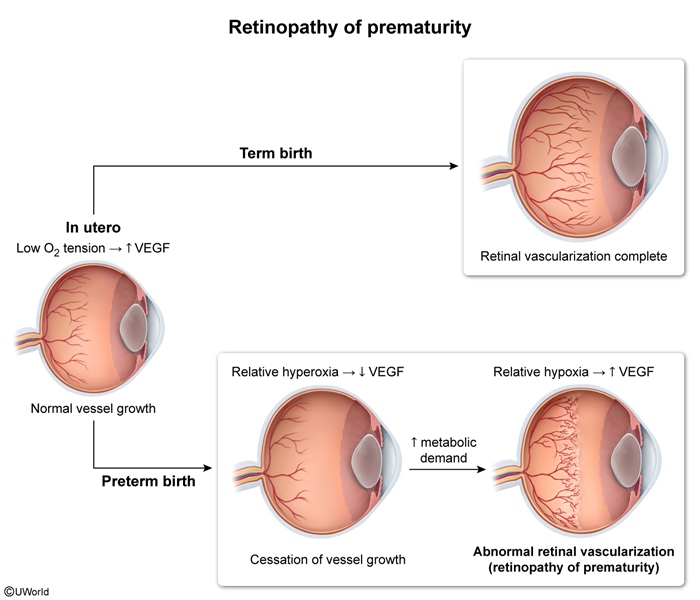Retinopathy Of Prematurity
Article Sections
Introduction
Retinopathy of prematurity (ROP) is a vascular proliferative disorder exclusive to premature infants and is a leading cause of severe visual impairment and blindness. Pathophysiology involves disruption of proangiogenic factors (ie, vascular endothelial growth factor) related to varying oxygen tensions after birth.
Pathophysiology
In utero, the relatively low oxygen tension normally upregulates proangiogenic factors, such as vascular endothelial growth factor (VEGF). VEGF stimulates normal vessel growth beginning at the optic disc and advancing toward the periphery. Premature birth disrupts this process (Figure 1) as follows:
- Phase 1: The relatively hyperoxic environment (even in room air) after delivery leads to downregulation of VEGF and slowing or arrest of retinal vascular growth.
- Phase 2: Once the retina begins to mature (over subsequent weeks), increased metabolic demand causes relative retinal hypoxia, which again stimulates VEGF. This often results in aberrant new vessel formation (
Continue Learning with UWorld
Get the full Retinopathy Of Prematurity article plus rich visuals, real-world cases, and in-depth insights from medical experts, all available through the UWorld Medical Library.
Figures
